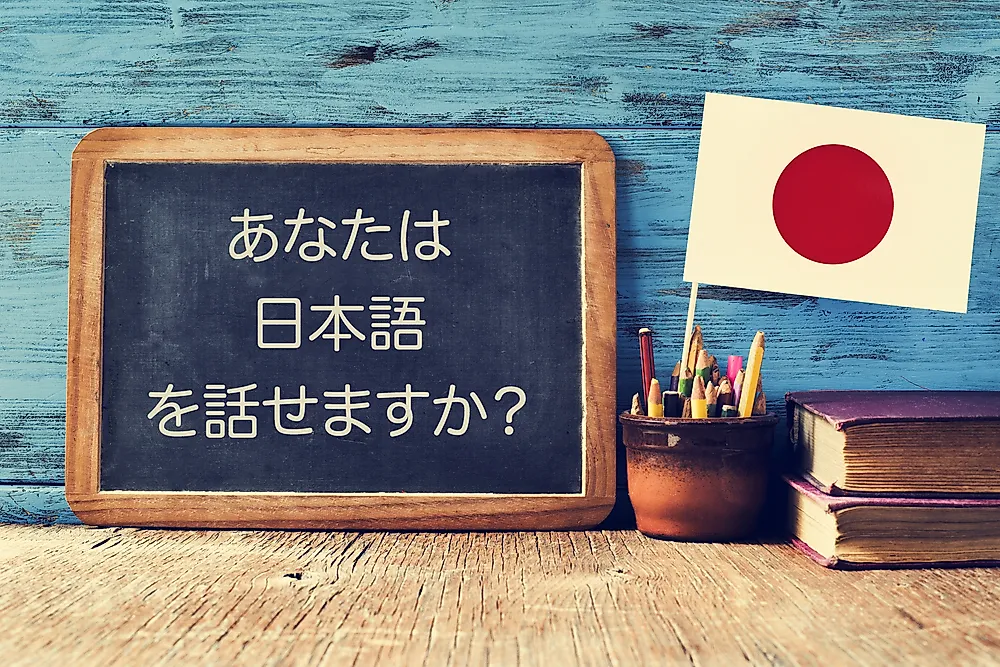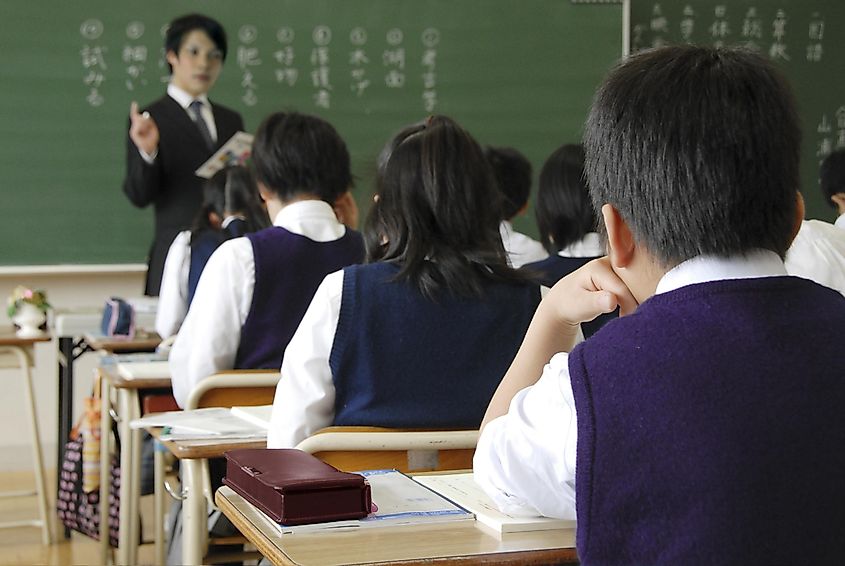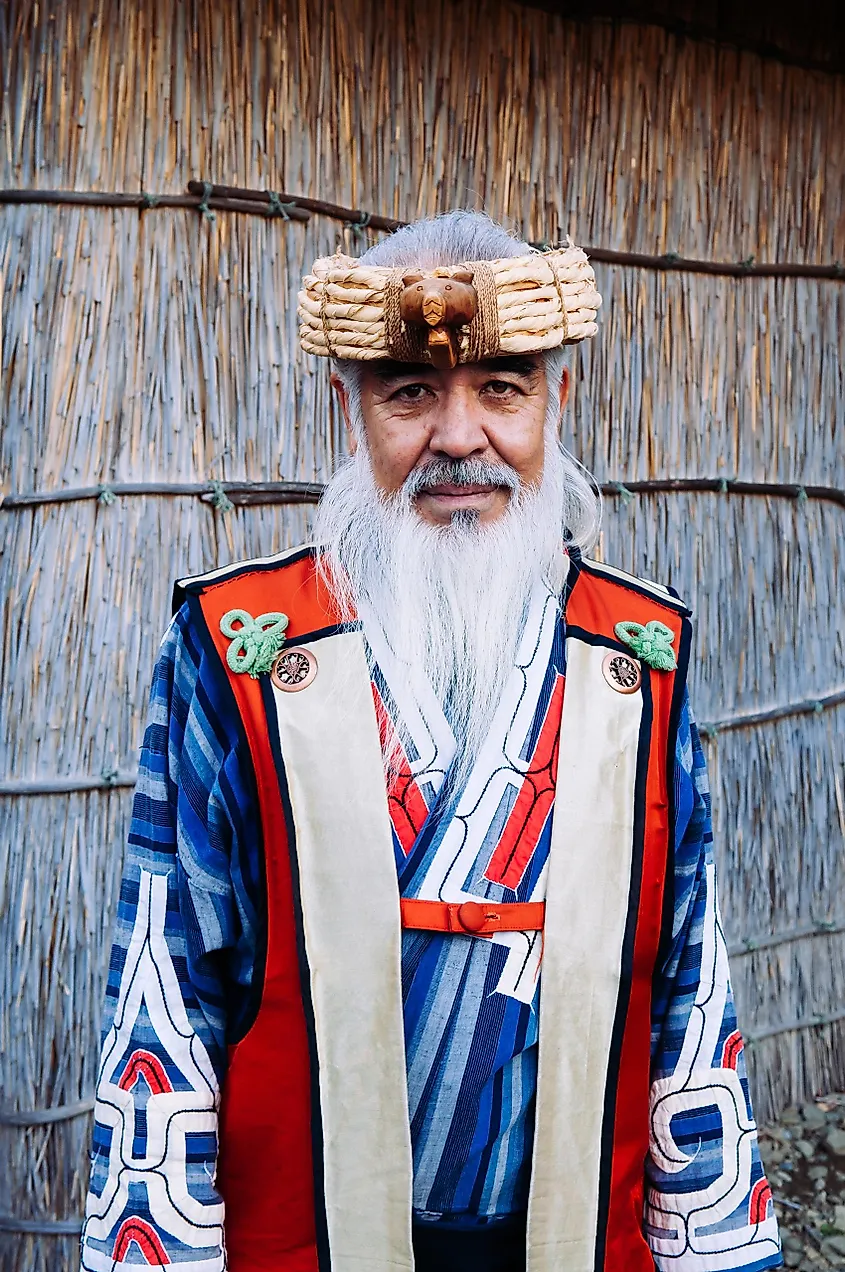What Languages Are Spoken In Japan?

- People in Japan speak languages from two main language families: the Japonic languages and the Ainu.
- The Ryukyuan languages are part of the Japonic family even though they are unintelligible to those who speak standard Japanese.
- There are many dialects spoken in Japan and some are considered by UNESCO to be endangered due to the introduction of standard Japanese nationwide in schools.
Where does language come from? Babies make grunts and gurgles and babble incomprehensibly until one day, they suddenly come out with a few real words. Of course, they are imitating those around them and learning the dominant language they hear. But where does language come from in the first place?
Japan’s dominant language is, unsurprisingly, Japanese, and no one really knows for sure how it sprang forth in the country. What is known is that people who inhabited the area long ago spoke a different language that has been lost over time. Researchers think what we now call Japanese was brought over by people migrating from continental Asia and/or the Pacific Islands, and that somehow it took over as the dominant form of communication as the Japanese culture developed.
As in many countries, more than one language is spoken in Japan. Almost everybody in the country, about 98%, is of ethnic Japanese origin and almost all of these individuals, 121 million people, speak Japanese. A small minority of people speak other languages, all of which belong to two language families: the Japonic language family, and the Ainu family. Within these two families lie various sub-families of languages and dialects that are spoken in different areas of the country.
Japonic Languages
The Japonic languages include different forms of Japanese, as well as the Ryukyuan languages.
The standard Japanese (hyōjungo) recognized today as the country’s national language is that which was spoken by the upper and middle classes in the Yamanote area around 1901. This is where Tokyo is today—Tokyo was known as Edo when it became the country’s capital at the beginning of the 17th century. Later on, in 1901, the Japanese Ministry of Education sought to create a common standard of language among its people, and declared the language spoken in the capital to be that which would be taught in schools everywhere.

This helped to ensure there was a national standard for communication, but unfortunately, there was a drawback to this method. There are many other forms of Japanese that are still spoken in the country, and when Yamanote’s, or Tokyo’s, Japanese was made the standard, this meant that other types of Japanese began to be considered dialects. A hierarchy was reinforced. Students who spoke other “dialects” of Japanese at school began to be ridiculed and were punished for doing so. This instilled a sense of shame in people whose first language was something other than standard Japanese.
What are these other dialects? Japan is divided into 47 prefectures, and you could say there are as many varieties of Japanese. Some prominent dialects include the Kansai, Osaka, Kyoto, and Tohoku dialects.
Ryukyuan Languages
The second sub-family in the Japonic language group is the Ryukyuan languages. These include all the other languages in the data table below, apart from Japanese and Ainu. These are the native tongues that are spoken in the Ryukyu islands of the country. To get a picture of how special these languages are, we can say this: UNESCO has identified eight minority languages as being endangered in Japan, and six of them are Ryukyuan.
Standardizing Japanese has come at a cost. Since the 1950s, Japanese has been the first language for the people of the Ryukyuan islands, effectively wiping out their native languages. There are about 750 local Ryukyuan dialects and amazingly, they are nothing like standard Japanese. In fact, they are mutually unintelligible: those who only speak them cannot understand standard Japanese, and vice versa.

Ainu Languages
Another language group exists in Japan. Like some of the Ryukyuan languages, the Ainu are also classified as endangered by UNESCO. The few people who speak Ainu languages generally live in southwestern Hokkaido, and they are quickly dying out. In 2012, all the fluent native Ainu speakers were said to be 80 years and older in Japan. There were also some semi-fluent speakers who were in their 60s at the time. Obviously, the language will disappear if a concerted effort is not made to pass it on and keep it alive.
Originally, there were about 19 Ainu dialects, but today all that remains is the Hokkaido dialect.
The Ainu people were some of Japan’s original inhabitants and were hunter-gatherers that worshiped the natural world.
Language is an important part of a country’s culture and keeping it alive in all its diverse forms can help contribute to a nation’s vibrancy. In Japan, the different forms of Japanese, as well as the Ryukyuan and Ainu languages all have a slightly different history that weave a rich tapestry. By studying them, we can gain unique insight into how the country evolved as a whole.
What Languages Are Spoken In Japan?
| Rank | Language | Number of Speakers in Japan (estimates) |
|---|---|---|
| 1 | Japanese | 121 million |
| 2 | Ainu | almost extinct |
| 3 | Amami-Oshima, Northern | 10,000 |
| 4 | Amami-Oshima, Southern | 1,800 |
| 5 | Kikai | almost extinct |
| 6 | Kunigami | 5,000 |
| 7 | Miyako | 67,000 |
| 8 | Okinawan, Central (Okinawan) | 985,000 |
| 9 | Oki-No-Erabu | 3,200 |
| 10 | Toku-No-Shima | 5,100 |
| 11 | Yaeyama | almost extinct |
| 12 | Yonaguni | 800 |
| 13 | Yoron | 950 |











